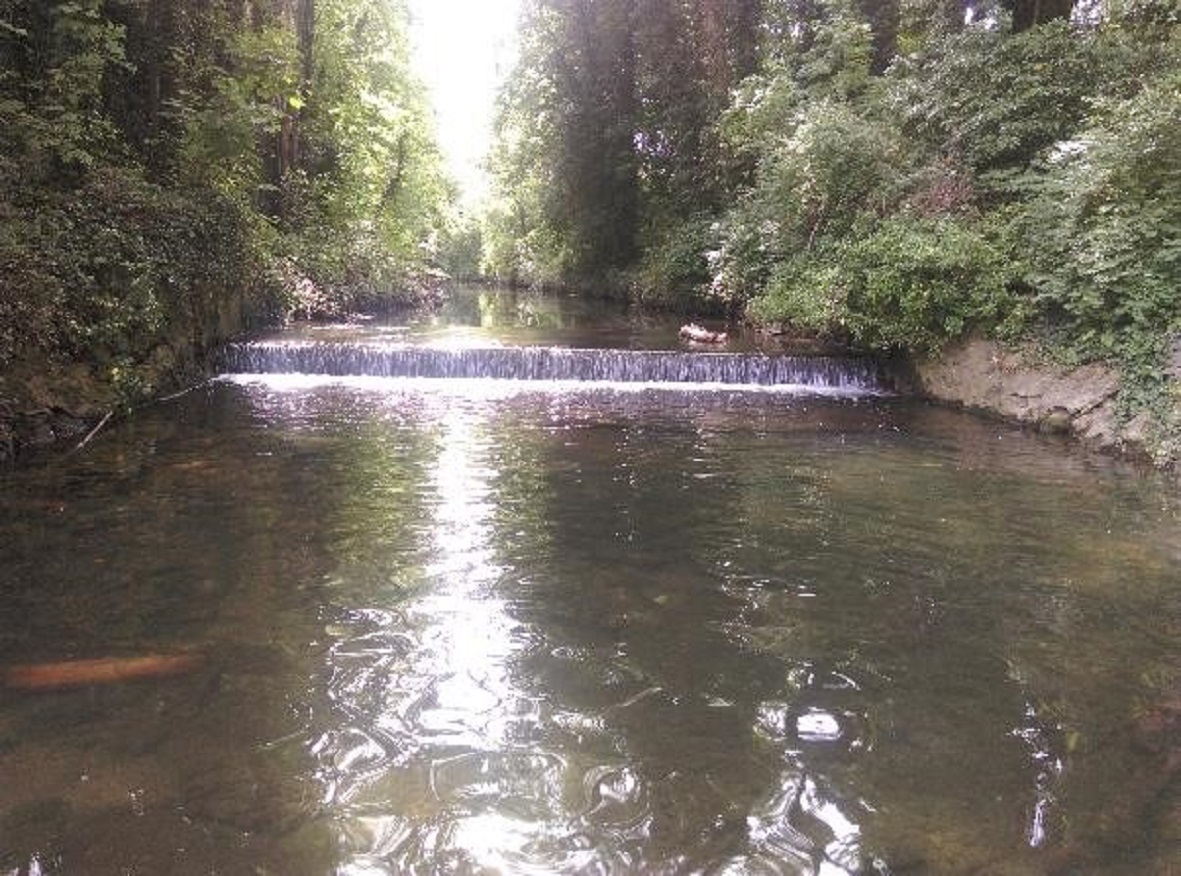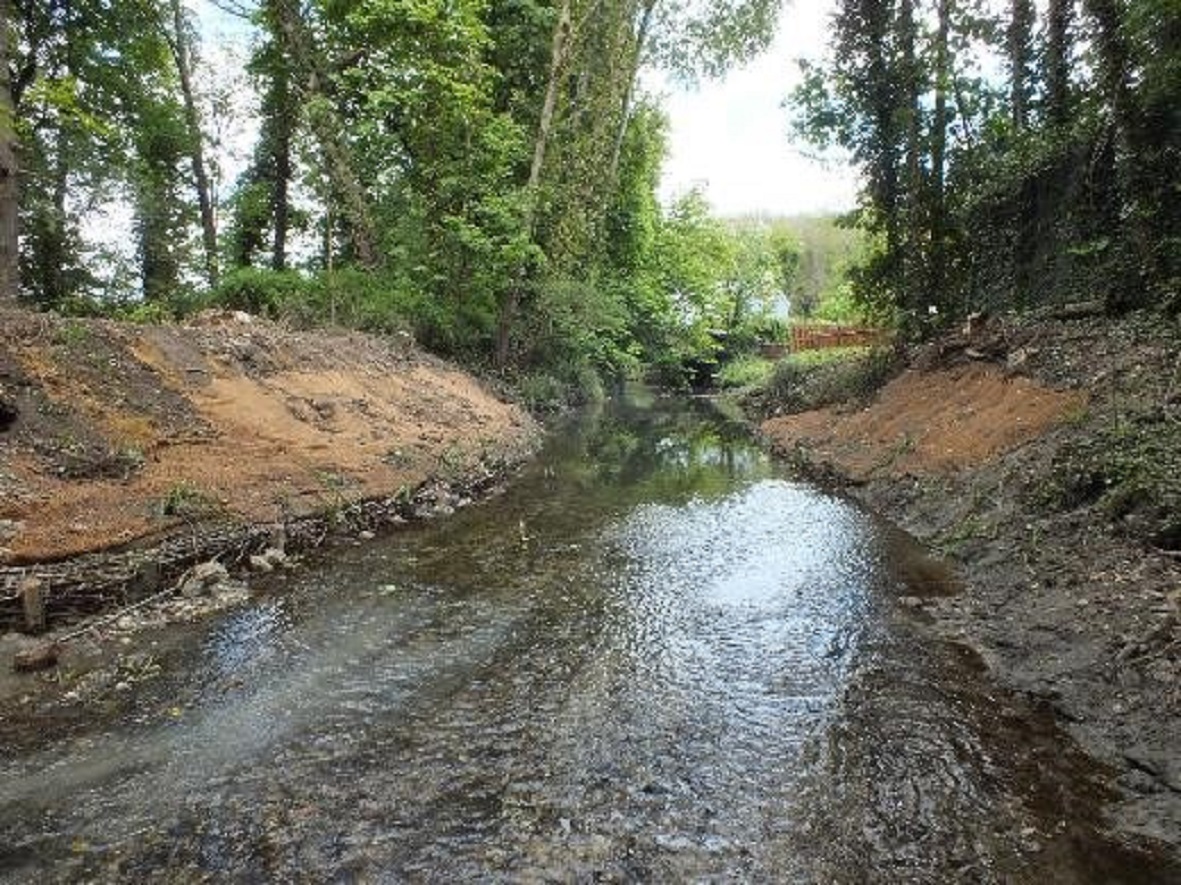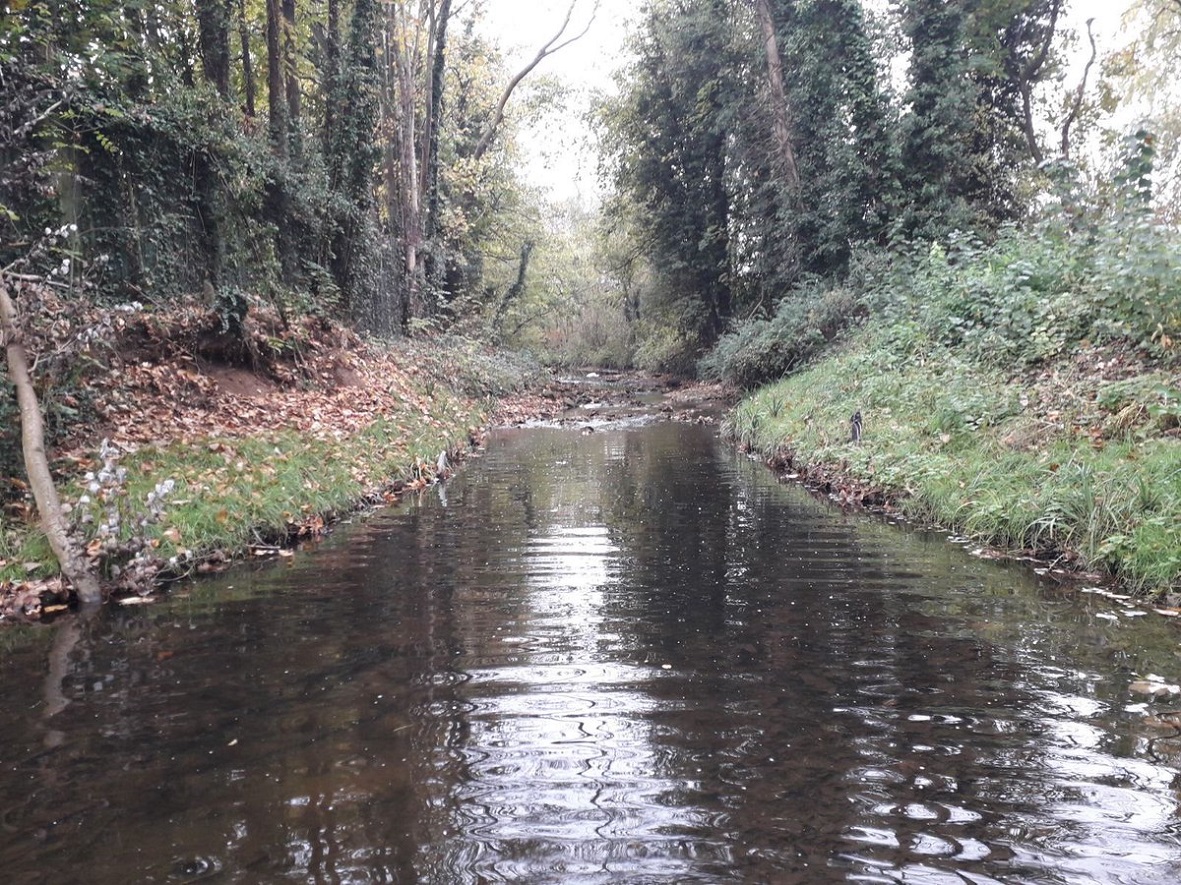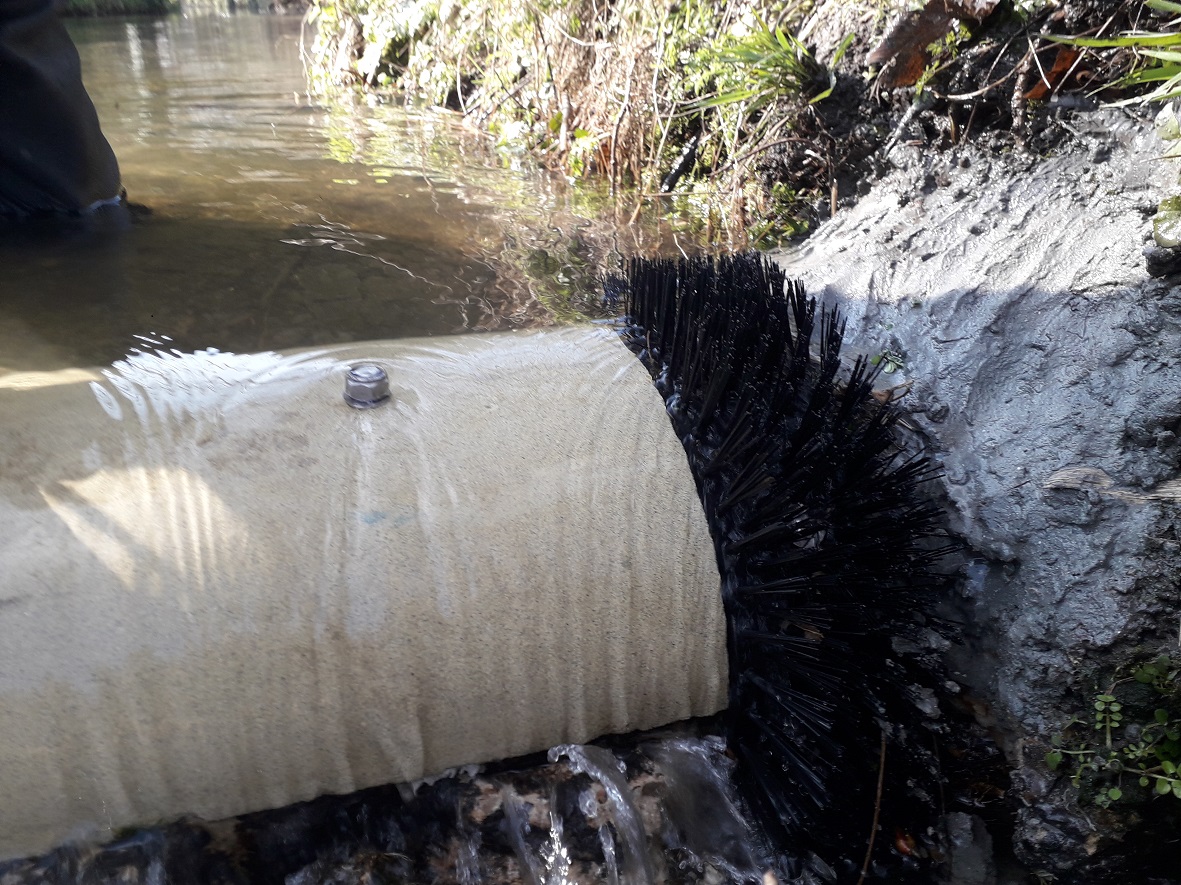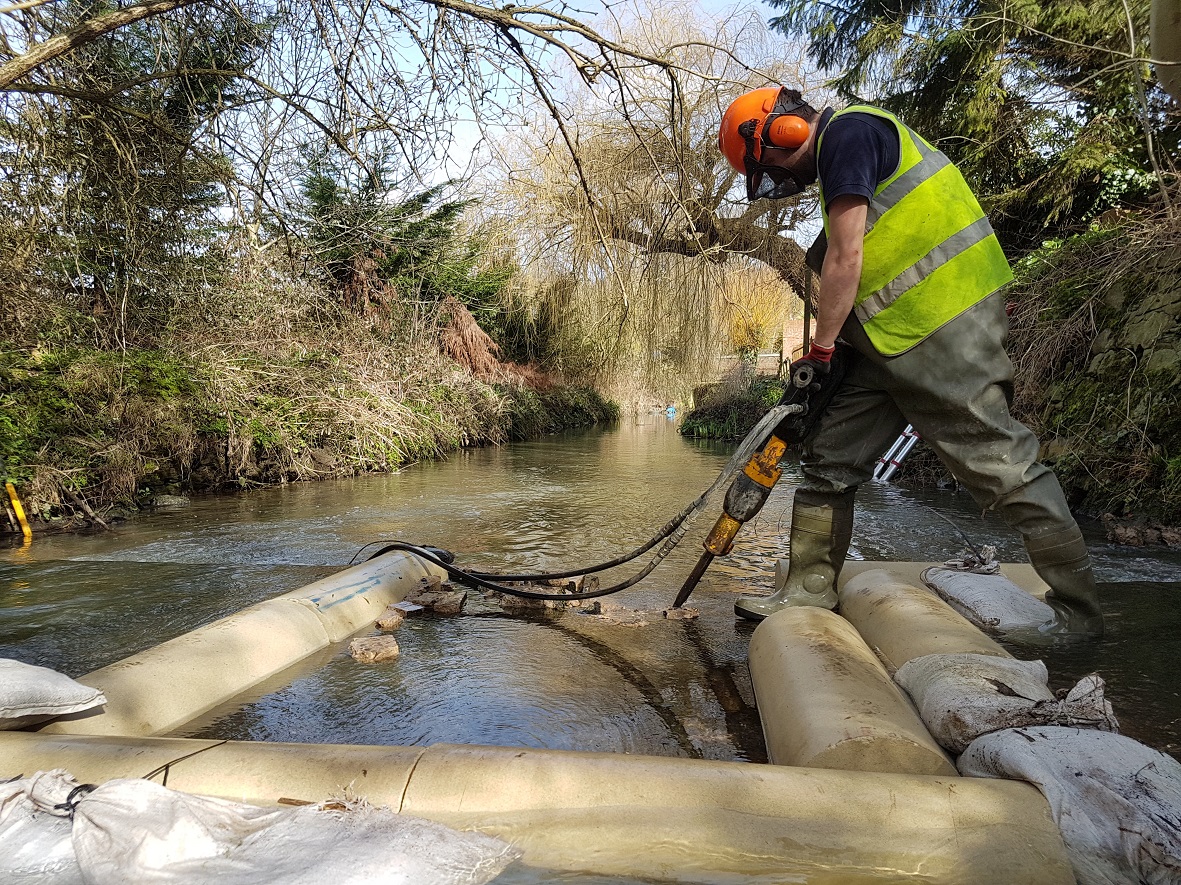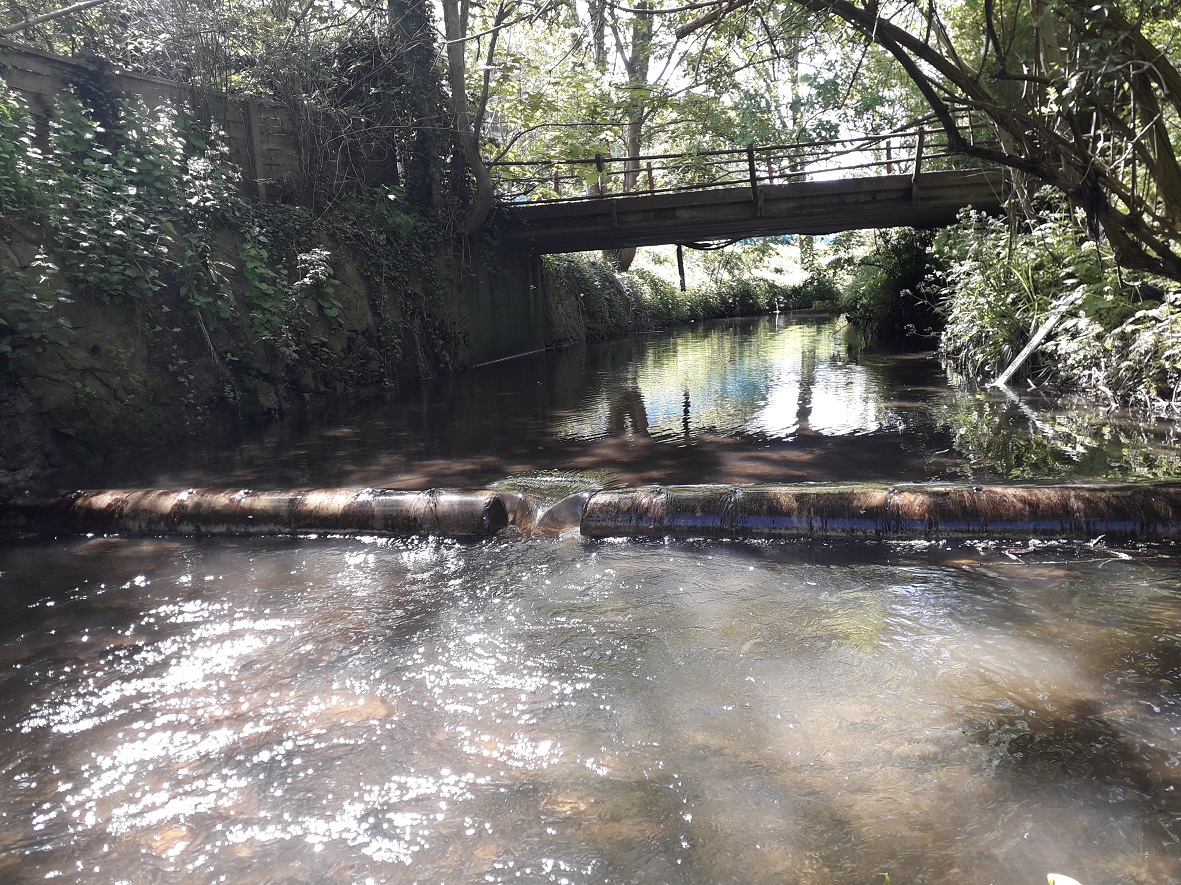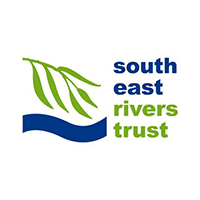Weirs make fish passage impossible, this leads to isolated populations that cannot migrate upstream to spawn; and the fish are vulnerable to pollution.
Work carried out to four obstructions on the Hogsmill River, South West London have been part of the final stages addressing an ongoing programme of fish passage easements at 18 weirs on the Hogsmill River.
This project was completed at the end of March 2018. Weirs have either been removed or modified by cutting in notches (pictured below) to enable fish passage. These works have contributed to the goal of achieving fish passage from the Hogsmill chalk stream headwaters to its confluence with the River Thames. SERT are working towards modification of three more barriers this year to fully achieve the goal. Natural geomorphological processes have been restored to this previously impounded section of river. All the works have been monitored for fish passage to confirm the success of the project .
Landowners and tenants who have land next to the river now have a greater understand of the river and the impacts that sceptic tanks can have.
The accomplishment of making a whole river accessible for fish and other species will be a significant achievement. Further progress has been made to achieving WFD targets by addressing causes of failure to fish, enhancing fish populations and delivering mitigation measures.
Many fish species will benefit because of this project, including European eels. Eel bristle (pictured below) has been installed to allow elvers to migrate upstream.
The images immediately below show River Club Weir before, immediately after and 6 months after full weir removal. The riverbanks have been reprofiled and marginal plants are establishing, this will further enhance the river for a wide variety of species.

Many fish species are benefitting from this project, including the critically endangered European eel.
